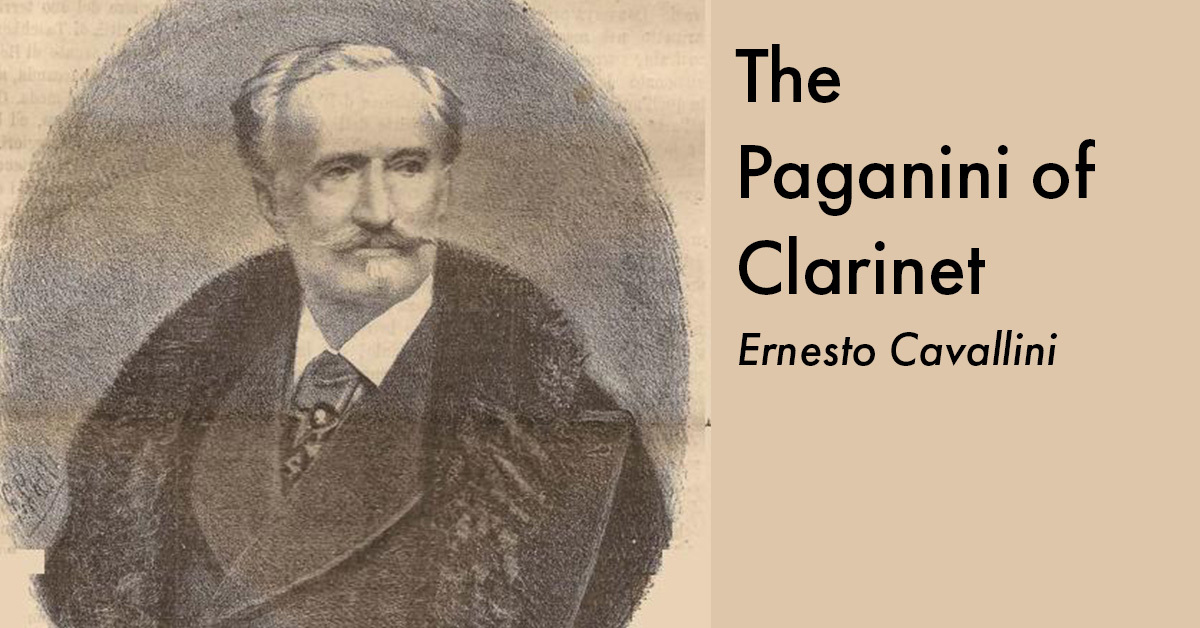The Paganini of Clarinet: Ernesto Cavallini
by Mitchell Estrin
Date Posted: May 02, 2019

Ernesto Cavallini (1807-1874) was the most famous Italian clarinet virtuoso of the 19th century. He was celebrated for his amazing technique and electrifying performances. Cavallini served as principal clarinet of La Scala, the world famous opera house in Milan that was the site of the premiere of operas by Verdi, Puccini, Donizetti, Bellini, and Rossini. The famed English clarinetist Henry Lazarus was so impressed by Cavallini’s playing that he called him “The Paganini of the Clarinet.”
Cavallini was born in 1807 and studied clarinet at the Milan Conservatory with Benedetto Carulli. He became known for his virtuosic performances both as soloist and in the opera house. Cavallini concertized extensively, including performances in Vienna, London, Paris, Barcelona, Belgium, Russia, and South America. His playing was celebrated by many of the leading composers of the time, including Verdi and Rossini. His playing so moved Verdi, that Verdi composed an extended solo in the prelude of Act III of his opera La Forza del Destino for Cavallini. The action on the stage comes to a standstill and the solo clarinet takes the spotlight for over 3 minutes.
Some interesting historical notes about Cavallini:
- He played for most of career on a 6-keyed boxwood clarinet, never favoring a more modern instrument with a more highly developed key system.
- He spent 15 years living and performing in St. Petersburg, Russia.
- He was the first professor of clarinet at the St. Petersburg Conservatory, also teaching voice.
- He played with the reed facing up, which was a widely used practice in Italy until the early 20th century.
- He served on the faculty of the Milan Conservatory.
- His amazing breath control and ability to sustain long phrases has led to modern speculation that he could circular breathe.
Cavallini was also a prolific composer, writing a number of significant solo and study works for the clarinet, including his most performed composition, the virtuoso showpiece Adagio and Tarantella.
All serious clarinet students tackle his marvelous 30 Caprices. These difficult and rewarding studies were a favorite of the great clarinetist and teacher Robert Marcellus. Cavallini also composed one of the only significant 19th century solo works for E-flat clarinet and piano, the Carnival of Venice.
His Concerto No. 1 for clarinet and orchestra was recently published by Edizioni Musicali “Eufonia”, the first edition since the original publication in 1845.
Some of Cavallini’s other compositions that are still popular today include his Concert Fantasia on Motives from Bellini’s Opera “La Sonnambula” and Serenata for clarinet and piano.
Cavallini was a trailblazer for the advancement of clarinet technique and continued in the idiomatic virtuosic composition traditions of the nineteenth century.
Subscribe to the We Are Vandoren E-newsletter (WAVE) to receive 4 weekly articles for Performers, Students, and Educators